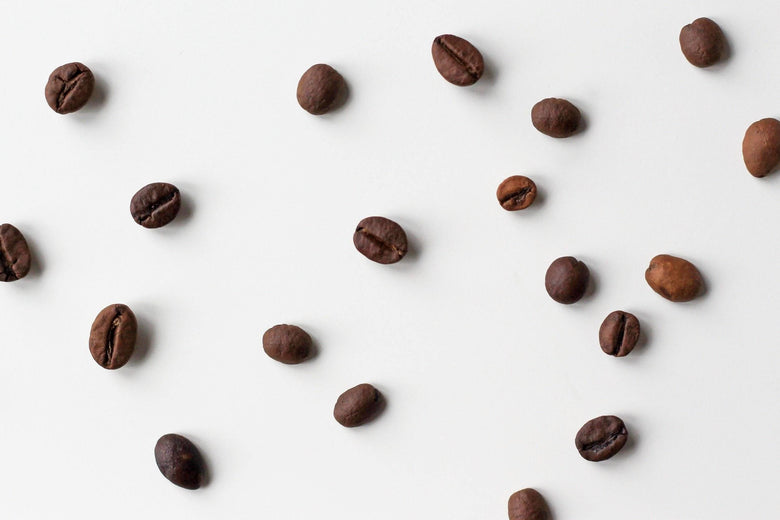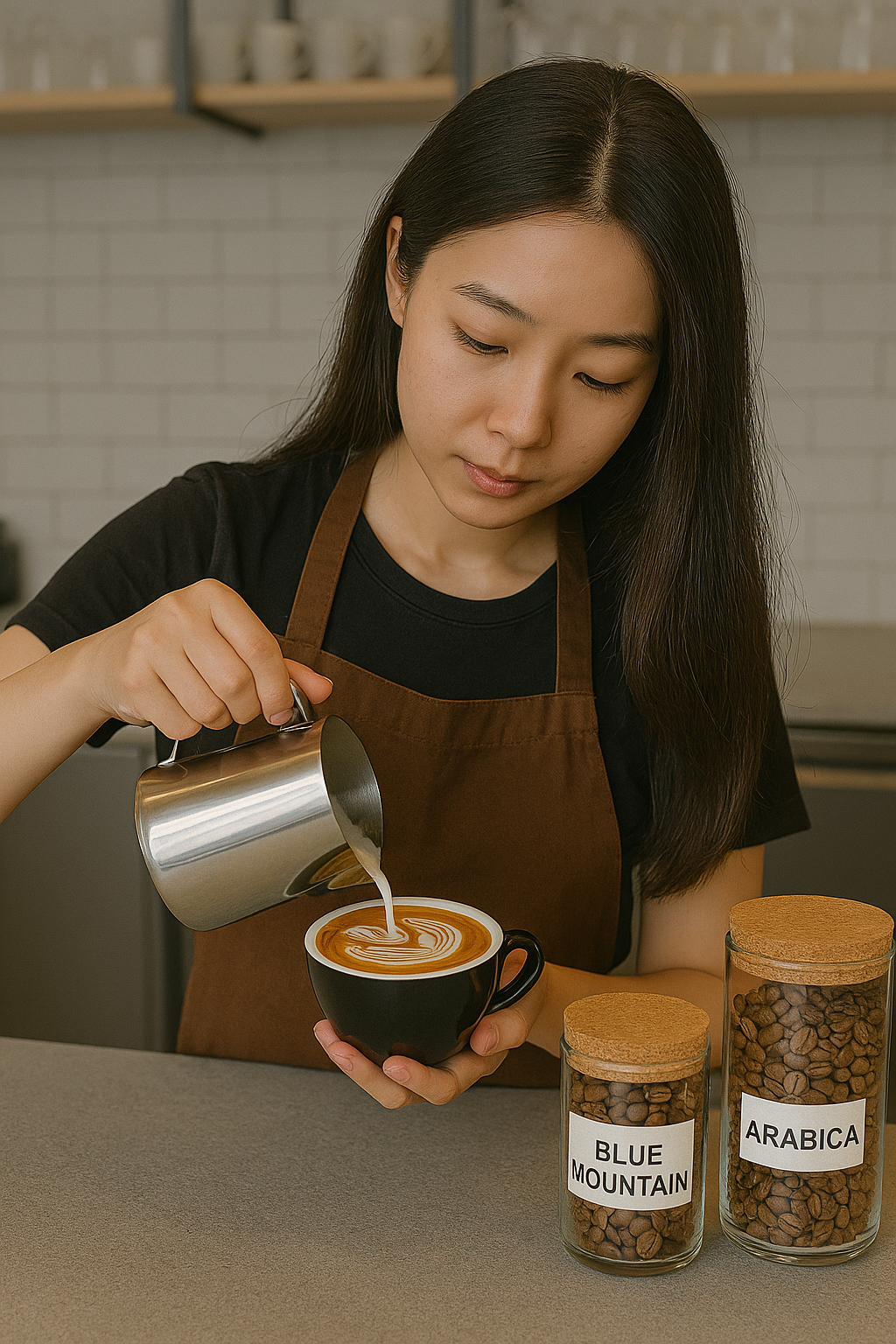Why SOE Single Origin Espresso Is Highly Rated Among Baristas
Why SOE Single Origin Espresso Is Highly Rated Among Baristas
Blog Article
Coffee Beans 101: Everything You Need to Understand About Coffee and Blended Coffee Beans
When it involves coffee, understanding the subtleties of coffee and mixed beans can change your daily cup. You'll uncover the unique features of Arabica and Robusta beans, and just how each effects taste and high levels of caffeine content. From the growing procedure to toasting techniques, every action contributes in your coffee experience. So, what makes the best brew? Let's discover the necessary aspects that add to an outstanding mug of coffee.
Comprehending Coffee Beans: Kinds and Varieties
When diving into the world of coffee, comprehending the kinds and varieties of coffee beans is crucial for every enthusiast. You'll largely come across two primary species: Arabica and Robusta. Arabica beans are known for their smooth, complex flavors and lower high levels of caffeine material, making them a favorite amongst coffee connoisseurs. On the various other hand, Robusta beans load a strike with a more powerful, a lot more bitter preference and higher caffeine degrees, commonly used in espresso blends.
Within these species, you'll find numerous local ranges, each bringing special attributes. As an example, Ethiopian Yirgacheffe uses intense flower notes, while Colombian beans supply a healthy taste account. As you explore, bear in mind to pay interest to processing methods like washed or all-natural, as they can substantially affect the last preference. By acquainting yourself with these beans and their tastes, you'll boost your coffee experience and make more informed options in your brewing trip.
The Growing Refine: From Seed to Bean
When you check out the trip of coffee, all of it starts with seed choice methods that establish the structure for quality. From there, cultivation and harvesting play crucial duties in making sure the beans flourish. Lastly, processing methods transform those gathered cherries right into the coffee beans you like.
Seed Option Strategies
Selecting the ideal seeds is vital for producing premium coffee beans, as it lays the structure for the whole expanding process. Pay interest to the seed's age and storage space problems, as fresh seeds have a tendency to sprout better. Take into consideration the disease resistance of different varieties, as this can significantly impact your yield.
Growing and Harvesting
As you support your coffee seeds into prospering plants, recognizing the cultivation and harvesting procedure is important for attaining the most effective taste and top quality. Begin by planting your seeds in well-draining soil, ideally in a shaded location to secure them from direct sunshine. As your plants grow, preserve consistent moisture, and be mindful of their requirement for nutrients. Prune consistently to advertise air flow and healthy and balanced growth.
When it comes time to harvest, search for ripe cherries, which generally turn a lively red. Hand-picking is commonly the most effective approach to guarantee only the ripest cherries are chosen. Timing is crucial; harvesting also late or also early can impact the taste profile of your beans. Accept perseverance and care, as this is where quality begins.

Handling Approaches Discussed
As soon as you've gathered your coffee cherries, the following essential step is processing them to change those dynamic fruits into the beans you'll make. In the completely dry process, you spread the cherries out in the sunlight to completely dry, enabling the fruit to ferment and give special flavors to the beans. Understanding these approaches is vital to enjoying your coffee experience.
Toasting Strategies: How Flavor Is Created
When it pertains to roasting coffee beans, recognizing roast levels is vital to revealing their special tastes. Each toasting technique impacts the scent and improves the flavor growth procedure, providing you a richer coffee experience. Allow's explore how these elements come with each other to boost your everyday mixture.
Roast Levels Discussed
Roast degrees play a crucial duty in forming the taste profile of your coffee. By understanding these degrees, you can better select a coffee that matches your preference preferences. Experiment with different roasts to discover which one resonates with you, boosting your overall coffee experience and satisfaction.
Influence On Scent
The roast degree not only affects the taste of your coffee but likewise considerably impacts its aroma. When you choose a light roast, you'll often discover brilliant, floral notes that can make your coffee scent fresh and lively. As the beans darken, the scent changes; a tool roast brings out a lot more balanced, caramelized aromas, while a dark roast has a tendency to include vibrant, great smoky touches. Each roasting strategy launches different volatile compounds, shaping how your coffee scents. In addition, the quality of the beans plays a crucial role; freshly roasted coffee releases a lot more fragrant oils, improving that enticing fragrance. So, pay interest to the roast level-- it's key to exposing the full fragrant experience of your mixture.
Taste Advancement Process
As you explore the flavor development process, you'll discover that toasting strategies play an important role in forming the taste profile of your coffee. The roasting temperature and time directly influence the acidity, sweetness, and bitterness of the beans. Light roasts maintain even more of the bean's initial flavors, highlighting fruity and floral notes.
Espresso vs. Blended Coffee: Secret Differences
Espresso and combined coffee each offer distinct experiences that deal with various preferences and preferences. Coffee is a focused coffee made forcibly warm water via finely-ground coffee beans, resulting in an abundant, strong taste and a velvety layer of crema ahead. It's typically delighted in as a shot or utilized as a base for beverages like cappucinos and cappuccinos.
On the other hand, mixed coffee incorporates numerous beans from various regions, producing an extra well balanced flavor account. You'll commonly locate blends that highlight sweet taste, level of acidity, or body, making them versatile for different brewing methods. While espresso concentrates on strength, combined coffee might use a more comprehensive series of flavors that can change with each sip.
Eventually, your selection in between coffee and combined coffee boils down to your individual preference. Whether you long for a quick jolt or a leisurely mug, both choices have something scrumptious to use.

Developing Approaches: Opening the Perfect Mug
When it concerns brewing coffee, discovering the right method can change your experience and elevate your cup. Each brewing method has its special charm and can greatly influence your coffee's flavor and scent. Utilizing a French press enables you to appreciate a rich and full-bodied mixture, while a pour-over method gives a clean, bright cup with unique tastes.
If you like coffee, purchasing a top quality machine can assist you master the art of drawing shots. Additionally, for comfort, a single-serve shuck system offers speed without compromising preference.
Don't forget about cool brew, which provides a smooth, much less acidic coffee ideal for warm days. Experiment with various techniques to discover what reverberates with your taste buds.
Tasting Notes: Identifying Taste Profiles
Just how can you absolutely value your coffee if you do not understand what tastes to search for? Tasting notes are your overview to recognizing the complicated SOE globe of coffee. When you drink, take notice of the initial flavors that hit your palate. You may identify fruity notes, like berry or citrus, or probably a nutty undertone. As you continue to taste, notice just how the flavors progress-- this is referred to as the "finish." Some coffees may leave a chocolatey or caramel aftertaste, while others may have a brilliant, tidy finish.
Take into consideration the body of the coffee, too; is it ventilated and light or thick and syrupy? Don't forget acidity; a bright level of acidity can add life, while a reduced level of acidity may give a smoother experience. By identifying these flavor profiles, you'll deepen your connection with each mug, making coffee tasting a fascinating journey of exploration.

Tips for Choose and Storing Coffee Beans
Saving and choosing coffee beans properly can considerably enhance your brewing experience. Beginning by choosing high-grade beans that suit your preference. Try to find quality; beans baked within the last two weeks are ideal. Examine the roast day on the packaging, and get from credible roasters or local shops.
As soon as you have your beans, save them in an impermeable container to stop direct exposure to light, air, and wetness. A dark, amazing area works best, so avoid maintaining them in the fridge or freezer, as this can introduce wetness. Only grind the quantity you require to keep quality; entire beans keep flavor longer than pre-ground coffee.
Last but not least, attempt to use your beans within two to four weeks after opening up for peak preference. Adhering to these tips will assure your coffee remains delicious and pleasurable, elevating your day-to-day mixture to brand-new elevations.
Often Asked Questions
How Much Time Do Coffee Beans Stay Fresh After Toasting?
Coffee beans stay fresh for concerning 2 weeks after toasting - SOE. You ought to store them in an airtight container, far from light and wetness. After that, their taste and aroma begin to lessen substantially

Can I Mix Different Coffee Bean Varieties?
Definitely, you can blend different coffee bean selections! Try out blends can improve tastes and produce a distinct preference account. Simply make certain to balance the staminas and attributes of each selection for the very best outcomes.
What Is the Suitable Grind Size for Espresso?
For coffee, you'll want a fine grind size, regarding the structure of salt. This permits optimal removal, causing an abundant, savory shot. Experiment a little bit to locate what suits your taste best!
Just How Does Elevation Affect Coffee Bean Taste?
Elevation influences coffee bean taste by affecting the growth rate and chemical structure. Higher elevations cause slower maturation, which improves acidity and complexity, giving your coffee a vivid and special taste you won't neglect.
Exist Decaffeinated Versions of Coffee Beans?
Yes, there are decaffeinated variations of espresso beans. You can delight in a rich espresso flavor without the caffeine kick. Just search for "decaf" blends at your regional coffee shop or specialty shop.
Coffee Beans 101: Every Little Thing You Need to Know Regarding Coffee and Blended Coffee Beans.
When diving right into the globe of coffee, recognizing the types and varieties of coffee beans is crucial for every fanatic.When it comes to roasting coffee beans, understanding roast levels is essential to revealing their distinct flavors. Coffee is a focused coffee brewed by requiring hot water with finely-ground coffee beans, resulting in a rich, strong flavor and a luscious layer of crema on top.On the various other hand, combined coffee integrates numerous beans from different areas, developing a more well balanced taste profile.
Report this page